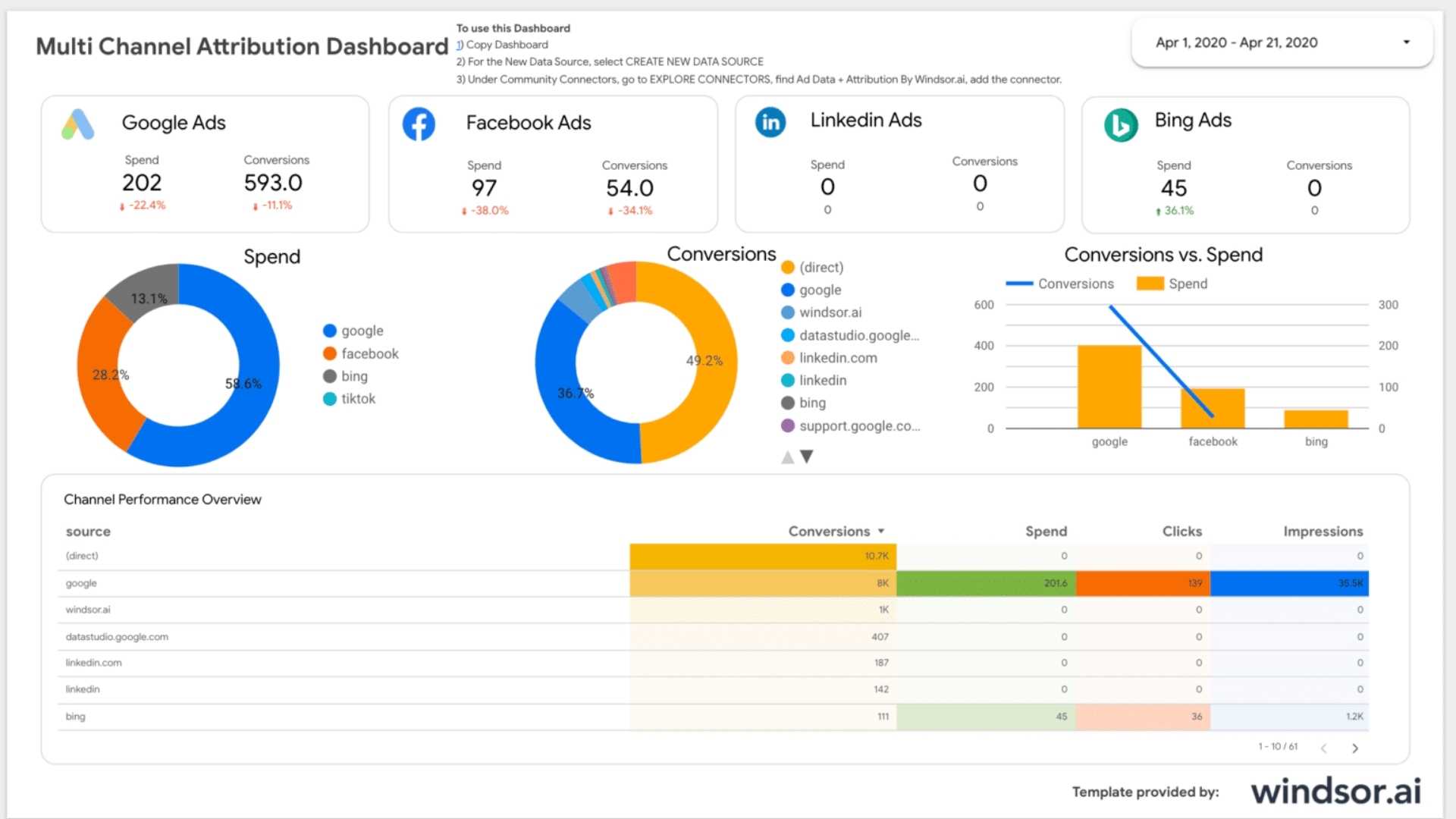Introduction
Overview of Social Media Dashboards
In today’s fast-paced digital landscape, Social Media Dashboards act as the command center for brands and marketers. These tools aggregate data from various social media platforms—think Facebook, Twitter, Instagram, and LinkedIn—into a single interface, allowing users to track performance metrics, manage posts, and analyze audience engagement all in one place. Imagine easily overseeing your brand’s online presence to see what works and what needs improvement!
Importance of Social Media Dashboards in Digital Marketing Success
The significance of these dashboards cannot be overstated. They are essential for digital marketing success, helping businesses gain actionable insights from social media activities. Here’s why they matter:
- Real-Time Analytics: Quickly assess what content resonates with your audience.
- Performance Tracking: Measure the effectiveness of campaigns seamlessly.
- Strategic Decision-Making: Inform your content strategy based on data trends.
Social media dashboards help brands build stronger connections with their audiences and promote growth in today’s competitive digital landscape.
Understanding Social Media Dashboards
Definition and Functionality
Social media dashboards are powerful platforms designed to streamline the process of managing and analyzing social media activities. Essentially, they compile various metrics and key performance indicators (KPIs) into a user-friendly interface. This functionality transforms complex data into clear, actionable insights.
Instead of logging into each social network for insights, a dashboard provides all the essential information in one place. From tracking engagement rates to monitoring follower growth, dashboards simplify the overwhelming amount of data that social media generates.
Types of Social Media Dashboards
When it comes to social media dashboards, one size certainly doesn’t fit all. Here are some common types you might encounter:
- Analytics Dashboards: Focus on performance metrics and analytics.
- Management Dashboards: Assist in scheduling and publishing content.
- Engagement Dashboards: Help track audience interactions and feedback.
Each type serves a unique purpose, ensuring marketers can effectively meet their specific goals and maximize their social media strategies. By understanding these variations, businesses can select the right tools to elevate their digital marketing game.
Setting Up an Effective Social Media Dashboard
Choosing the Right Metrics
After understanding social media dashboards and their features, the next step is to set up your dashboard effectively. This starts with choosing the right metrics. Focusing on the most relevant metrics is crucial for deriving actionable insights.
Consider these key performance indicators (KPIs) to get started:
- Engagement Rate: Measures how well your content resonates with your audience.
- Reach and Impressions: Indicates how many people are seeing your posts.
- Follower Growth: Tracks changes in your audience size over time.
Choosing metrics that align with your business goals can turn data into targeted actions that drive better results.
Integrating Multiple Platforms
Another critical aspect of setting up a successful social media dashboard is integrating multiple platforms. This allows you to gather a holistic view of your brand’s online presence.
Here’s how to do it effectively:
- Select a Dashboard Tool: Choose a tool that supports integration with all your favorite social media channels.
- Connect Accounts: Link platforms like Instagram, Twitter, and Facebook within the dashboard.
- Consolidate Data: Ensure that data from each platform can be visualized alongside others for comprehensive analysis.
Integrating multiple platforms helps marketers streamline their workflow and capture valuable insights from all channels. This ultimately leads to a more informed strategy and better content performance.

Best Practices for Monitoring and Analyzing Data
Real-Time Monitoring
Now that your social media dashboard is set up with the right metrics, let’s discuss best practices for monitoring and analyzing data. One of the most effective strategies is real-time monitoring. Monitoring your social media performance in real-time helps you spot trends and engage effectively.
If a post is gaining popularity, you can take advantage of that by making similar content or responding to comments. Consider implementing:
- Alerts: Set notifications for surges in engagement or mentions.
- Live Feeds: Use live data feeds to track social media interactions as they occur.
Data Visualization Techniques
Once the data is flowing, transforming it into visual formats can make a world of difference. Data visualization techniques allow you to present complex information in an easily digestible format.
Here are some effective visualization tools:
- Graphs and Charts: Use line graphs to show trends over time or pie charts for demographic breakdowns.
- Heat Maps: Visualize engagement levels to identify peak times for audience interaction.
Using these techniques allows you to monitor your performance and share insights with your team more effectively, simplifying data-driven decision-making.
Streamlining Content Creation and Scheduling
Editorial Calendar Management
As data analysis becomes second nature, it’s time to focus on streamlining content creation and scheduling. A crucial step in this process is effective editorial calendar management. An editorial calendar serves as a guide, helping you publish content that aligns with your marketing goals and engages your audience.
Consider these best practices for managing your editorial calendar:
- Plan Ahead: Set a timeline for your content themes for the month or even the quarter.
- Collaborate: Use tools that allow your team to input ideas and track progress collectively.
- Review and Adjust: Regularly revisit your calendar to adapt to new trends or insights you gather from your dashboard.
This structured approach not only enhances productivity but also maintains consistency in your messaging.
Automated Scheduling
Alongside calendar management, automated scheduling plays a pivotal role in streamlining your workflow. By automating your post schedules, you reduce the daily hustle while ensuring your content goes live at optimal times.
Some tips for effective automated scheduling include:
- Batch Create Content: Dedicate time to create multiple posts at once, allowing for a steady stream of content.
- Use Scheduling Tools: Leverage platforms like Buffer or Hootsuite to schedule posts across various channels simultaneously.
- Monitor Performance: Review the performance of scheduled content to refine future scheduling strategies.
Brands can save time and focus on creating engaging content by using editorial calendars and automated scheduling.
Engaging with Your Audience Effectively
Social Listening Strategies
With a well-oiled content creation process in place, it’s essential to focus on engaging with your audience effectively. One powerful way to do this is through social listening strategies. Social listening involves monitoring social media platforms for mentions of your brand, products, or relevant topics. By tuning into these conversations, brands can gain invaluable insights that enhance engagement.
Here are a few effective social listening strategies to consider:
- Track Mentions: Use tools like Mention or Brandwatch to keep tabs on how often your brand comes up in discussions.
- Monitor Trends: Identify trending topics in your industry that your audience is discussing and jump in on the conversation.
- Engage Proactively: Respond to comments, questions, or complaints to demonstrate that you value customer opinions.
Implementing Customer Feedback
Once you have gathered insights from your listening efforts, the next step is implementing customer feedback. This shows your audience that their opinions matter and drives loyalty. Consider these strategies for doing so:
- Surveys and Polls: Use tools like SurveyMonkey to gather direct feedback regarding your products or services.
- Act on Feedback: Share updates based on customer suggestions and inform your audience about the changes.
- Showcase Testimonials: Prominently display positive feedback across your platforms to amplify your customers’ voices.
Combining social listening with proactive customer feedback helps brands build stronger connections and improve community engagement. This not only fulfills the audience’s needs but also boosts brand reputation, leading to long-term success.
Leveraging Analytics for Optimization
Performance Tracking and Reporting
As brands engage with their audiences, leveraging analytics for optimization becomes crucial. One of the first steps in this process is performance tracking and reporting. By consistently monitoring key metrics, businesses can assess which strategies are working and which need adjustment.
Consider these best practices for effective tracking:
- Set Clear Goals: Establish specific objectives tied to your KPIs, such as increasing engagement rates or boosting website traffic.
- Use Analytics Tools: Leverage platforms like Google Analytics and Facebook Insights to gather data on your social media performance.
- Create Regular Reports: Schedule monthly or quarterly reporting to analyze progress, identify trends, and adjust your strategies accordingly.
Having a clear view of your performance not only helps in refining existing strategies but also in identifying new opportunities.
A/B Testing and Experimentation
Another effective way to optimize your efforts is through A/B testing and experimentation. By testing different versions of content or campaigns, brands can pinpoint what resonates best with their audience.
Here’s how to implement A/B testing effectively:
- Select One Variable: Focus on one element to test—like subject lines or post formats—to measure impact accurately.
- Define Success Metrics: Decide what success looks like for your tests. Metrics may include click-through rates or conversion rates.
- Analyze Results: After testing, examine the data to determine which version performed better and why.
Integrating performance tracking with A/B testing helps brands enhance their strategies, boosting engagement, audience retention, and ROI. This iterative approach fosters an environment of learning and growth, essential for success in today’s dynamic digital landscape.
Ensuring Social Media Security and Compliance
Secure Handling of Data
As brands fine-tune their social media strategies, it’s imperative to address aspects of security and compliance. One of the fundamental components in this regard is the secure handling of data. In an era where data breaches are unfortunately commonplace, it’s vital to safeguard sensitive information collected from your audience.
Here are several tips for secure data handling:
- Use Encrypted Connections: Always opt for HTTPS when sharing data online to protect it from unauthorized access.
- Limit Access: Ensure that only authorized personnel have access to sensitive customer information within your team.
- Regular Training: Equip your team with knowledge about data security practices, raising awareness of potential threats.
Adhering to Regulations and Policies
Alongside data security, adherence to regulations and policies is essential for building trust with your audience. Privacy regulations, such as GDPR in Europe and CCPA in California, dictate stringent guidelines on data usage.
To ensure compliance, consider these steps:
- Understand Local Laws: Be informed about the legal requirements specific to your region or target audience.
- Transparency Is Key: Communicate openly about how customer data is being used and obtain consent where necessary.
- Regular Audits: Conduct internal audits to ensure that your processes comply with all relevant regulations.
Brands can build trust and navigate the digital landscape by prioritizing secure data handling and regulatory compliance. This proactive approach not only safeguards your audience but also enhances your brand’s reputation.

Conclusion
Recap of Key Points
In conclusion, let’s highlight the key takeaways from our exploration of social media dashboards that can enhance your digital marketing. Effective dashboards enable real-time monitoring and analytics, allowing brands to engage with their audiences meaningfully. Companies can enhance processes and boost engagement by utilizing metrics, integrating platforms, and adhering to best practices for content scheduling and performance tracking. Additionally, securing data and adhering to regulations not only protects your brand but also builds trust with your audience.
Future Trends in Social Media Dashboards
Looking ahead, the landscape of social media dashboards is poised for significant advancements. Here are a few trends to keep an eye on:
- AI and Machine Learning: These technologies will increasingly be used for predictive analytics, offering deeper insights into consumer behavior.
- Enhanced Personalization: Dashboards will evolve to provide more customized insights based on user preferences and past behaviors.
- Integration with Emerging Platforms: As new social networks emerge, seamless integration will become vital for comprehensive tracking.
Staying updated on trends helps brands optimize their social media strategies and remain competitive in the changing digital landscape.
For More Information
Check out my AI-generated podcast on marketing dashboards here:




